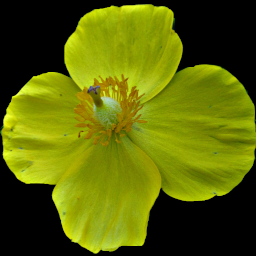 The clusters of airy flowers have no petals; it’s the white stamens that put on the show. The triple-compound leaves are very Columbine-like. As the common name implies, Tall Meadow-Rue can be quite tall—easily taller than a person. But it manages to look delicate and refined even at its tallest.
The clusters of airy flowers have no petals; it’s the white stamens that put on the show. The triple-compound leaves are very Columbine-like. As the common name implies, Tall Meadow-Rue can be quite tall—easily taller than a person. But it manages to look delicate and refined even at its tallest.
This plant likes a wet environment, and this one was growing beside a lake in North Park, where it was blooming in the middle of July.
Gray describes the genus and the species:
THALÍCTRUM [Tourn.] L. MEADOW RUE. Sepals 4-5, petal-like or greenish, usually caducous. Petals none. Achenes 4-15, grooved or ribbed, or else inflated. Stigma unilateral. Seed suspended. — Perennials, with alternate 2-3-ternately compound leaves, the divisions and the leaflets stalked; petioles dilated at base. Flowers in corymbs or panicles, often polygamous or dioecious. (A Greek name of an unknown plant, mentioned by Dioscorides.)
Flowers dioecious or polygamous.
Achenes sessile or subsessile, thin-walled, the ribs often connected by transverse reticulations; leaves 3-4-ternate.
Filaments club-shaped, ascending or spreading until after anthesis.
T. polygamum Muhl. (tall M.) Glabrous or pubescent but not glandular, 0.5-2.6 m. high; stem-leaves sessile; leaflets rather firm, roundish to oblong, commonly with mucronate lobes or tips, sometimes puberulent beneath; panicles very compound; flowers white (rarely purplish), the fertile ones with some stamens; anthers not drooping, small, oblong, blunt, the mostly white filaments decidedly thickened upwards; achenes glabrous. (T. Cornuti Man. ed. 5, not L.) — Wet meadows and along rivulets, Nfd. to O. and southw., common. July-Sept. Var. hebecarpum Fernald. Leaflets usually pubescent beneath; achenes pubescent. — Nfd. to s. Ont, and N. H.
